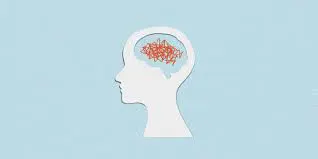Mild levels of anxiety can be beneficial in some situations. It can alert us to dangers and help us prepare and pay attention. Anxiety disorders differ from normal feelings of nervousness or anxiousness and involve excessive fear or anxiety. Anxiety disorders are the most common of mental disorders. They affect nearly 30% of adults at some point in their lives. However, anxiety disorders are treatable with a number of psychotherapeutic treatments. Treatment helps most people lead normal productive lives.
Anxiety refers to anticipation of a future concern and is more associated with muscle tension and avoidance behavior. Fear is an emotional response to an immediate threat and is more associated with a fight or flight reaction – either staying to fight or leaving to escape danger.
Anxiety disorders can cause people to try to avoid situations that trigger or worsen their symptoms. Job performance, schoolwork and personal relationships can be affected. In general, for a person to be diagnosed with an anxiety disorder, the fear or anxiety must:
There are several types of anxiety disorders: generalized anxiety disorder, panic disorder with or without agoraphobia, specific phobias, agoraphobia, social anxiety disorder, separation anxiety disorder and selective mutism. Generalized anxiety disorder involves persistent and excessive worry that interferes with daily activities. This ongoing worry and tension may be accompanied by physical symptoms, such as restlessness, feeling on edge or easily fatigued, difficulty concentrating, muscle tension or problems sleeping. Often the worries focus on everyday things such as job responsibilities, family health or minor matters such as chores, car repairs, or appointments. The core symptom of panic disorder is recurrent panic attacks, an overwhelming combination of physical and psychological distress. During an attack, several of these symptoms occur in combination: Because the symptoms can be quite severe, some people who experience a panic attack may believe they are having a heart attack or some other life-threatening illness. They may go to a hospital emergency department. Panic attacks may be expected, such as a response to a feared object, or unexpected, apparently occurring for no reason.










